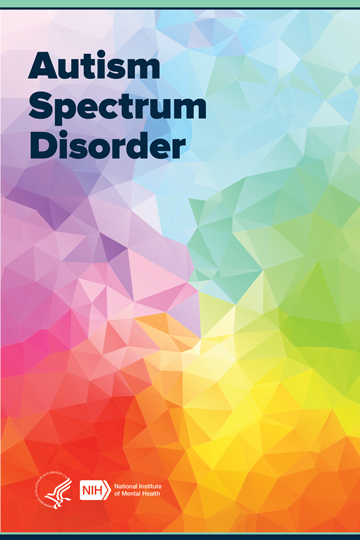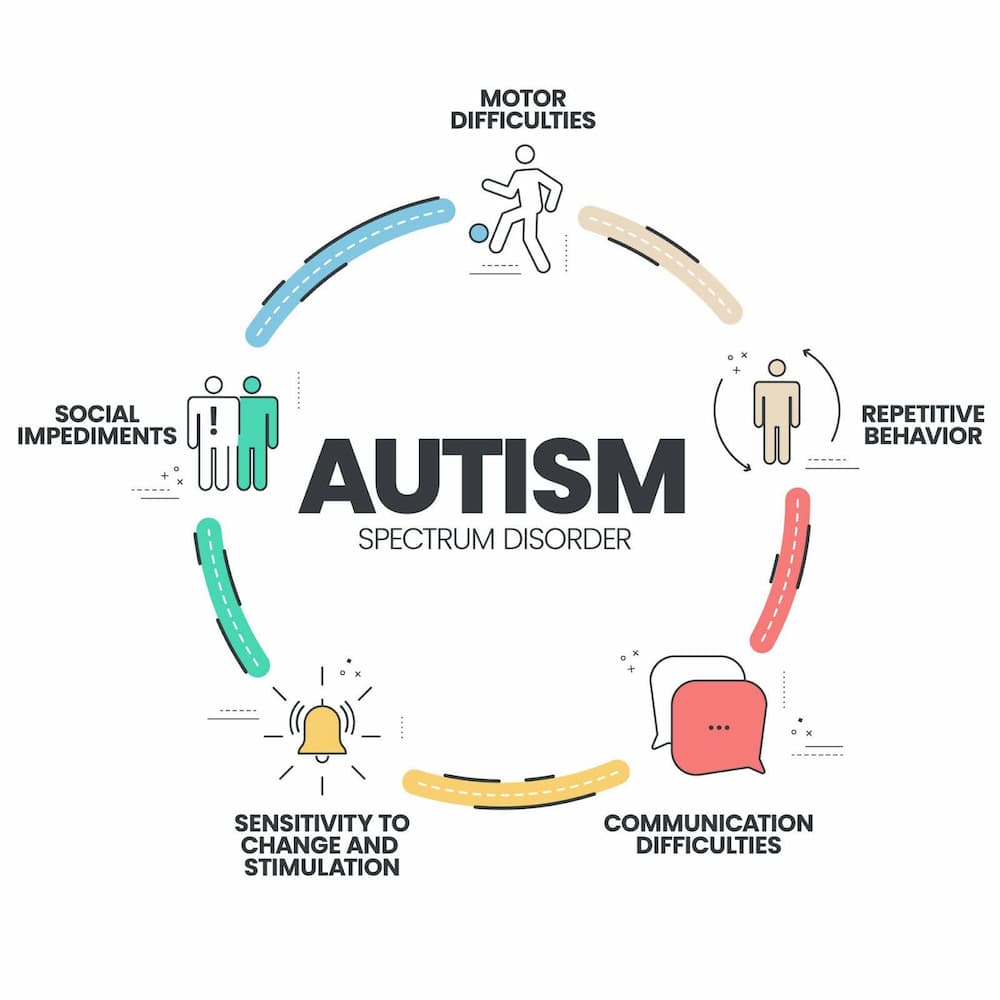Should you seek help from an Aba Therapist nearby
Comprehending the Influence of Behavioral Autism on Every Day Life and Social Interactions
You could not recognize how deeply behavior autism affects everyday life and social communications. Individuals on the range usually browse a globe filled with communication hurdles and sensory overload. These difficulties can lead to aggravation and isolation, affecting their connections and general health.
Specifying Behavior Autism and Its Attributes
Behavior autism, often described as autism range disorder (ASD), incorporates a variety of problems defined by difficulties in social interaction, communication, and repeated habits. You could observe that individuals with ASD often battle to translate social signs, which can result in misunderstandings in discussions. They may find it tough to develop eye contact or take part in little talk, making social circumstances feel overwhelming.
Communication troubles can show up in different means, from postponed speech advancement to a choice for using less words. Repetitive habits, such as hand-flapping or shaking, can act as coping mechanisms to manage anxiety or sensory overload. These features can exceptionally impact day-to-day life, making it crucial for you to comprehend and sustain those with ASD. By recognizing these attributes, you can promote an environment that promotes acceptance and urges reliable interaction, aiding individuals with autism prosper in their everyday communications.
The Spectrum of Autism: Comprehending Irregularity in Actions
Autism spectrum problem (ASD) isn't a one-size-fits-all diagnosis; it varies widely amongst people. You might experience individuals who are very spoken and involve conveniently in discussions, while others might like solitary activities or connect non-verbally.
Furthermore, the way people with ASD reply to sensory input can differ considerably; some might be bewildered by loud noises or brilliant lights, whereas others flourish in boosting atmospheres. The spectrum additionally includes differences in social interactions; some people might have a hard time to interpret social hints, while others browse social setups with loved one ease. Understanding this variability is vital, as it aids you value each individual's one-of-a-kind experience and tailor assistance to their certain requirements, cultivating a much more comprehensive setting for everyone.
Interaction Obstacles Faced by Individuals With Autism
When you communicate with people on the autism spectrum, you may notice their unique interaction difficulties. They often encounter difficulties with both verbal and nonverbal cues, which can influence their social interactions. Recognizing these obstacles is necessary for promoting far better links and support.

Verbal Communication Troubles
Several individuals on the autism spectrum experience spoken interaction problems that can significantly influence their daily communications. You might locate it challenging to share your ideas, feelings, or needs plainly. This can result in frustration for both you and those around you, as misunderstandings take place. You may battle with initiating conversations, preserving a subject, or understanding nuances in speech. Usually, you may prefer making use of straightforward language or repeated expressions, which can limit your ability to involve in deeper conversations. Your quantity, pace, or tone could not align with social expectations, triggering others to misunderstand your purposes. Identifying these obstacles can aid you and your assistance network develop approaches to enhance communication and cultivate much better links with others in your every day life.
Nonverbal Interaction Obstacles
Spoken interaction isn't the only difficulty individuals on the autism range face; nonverbal interaction barriers can be just as substantial. You may find it difficult to analyze body movement, faces, and eye get in touch with, which are essential for effective communication. These challenges can lead to misunderstandings or misconceptions of social cues, making communications really feel frustrating or complex. You might battle to express your very own feelings with nonverbal ways, leaving others not sure of your intents or sensations. This separate can create sensations of seclusion and irritation. Recognizing these barriers is important for promoting understanding and compassion in your communications. By attending to nonverbal communication, you can find approaches to boost your social experiences and enhance your overall quality of life.
Social Interaction Effects
Social interactions can commonly really feel overwhelming as a result of the one-of-a-kind interaction difficulties dealt with by individuals with autism. You may have problem with analyzing social signs, making it tough to comprehend sarcasm or body language. This can result in misunderstandings or awkward moments in conversations. Additionally, launching and keeping conversations may really feel tough, causing stress and anxiety in social situations. You might like organized environments, making spontaneous communications uncomfortable. It's likewise usual to experience problem in participating in little talk, which can hinder developing brand-new friendships. Recognizing these obstacles can help you discover methods to enhance interaction, such as exercising social abilities in risk-free settings or using visual help - Aba Therapist Near Me. Recognizing your needs permits you to navigate social communications with higher confidence and simplicity.
Social Communication and Partnership Building in Autism
While structure relationships can be challenging for individuals with autism, understanding their distinct perspectives and communication styles can promote meaningful connections. You could notice that lots of individuals on the spectrum favor direct interaction and may battle with social hints or tiny talk. By being simple in your communications, you can assist develop an atmosphere where they really feel comfortable.
Put in the time to observe and pay attention how they share themselves. This insight can assist you in steering conversations extra efficiently. Involving in shared interests can likewise act as a bridge to deeper connections. Whether click here it's a pastime, a favored show, or a shared interest, these typical strings can open doors to relationship.
Daily Life Routine: Navigating Difficulties and Approaches
Maneuvering daily life regimens can be especially testing for individuals with autism, especially when unexpected changes occur. To browse these obstacles, take into consideration applying aesthetic routines or checklists.
Developing a regimen that consists of sensory breaks can also be useful. You can intend brief breaks throughout your day to charge. It's important to communicate with those around you, allowing them know your requirements and preferences. This helps develop an understanding atmosphere.
Last but not least, technique mindfulness methods to handle anxiety and anxiety. Basic breathing exercises or basing methods can make a considerable distinction. By incorporating these approaches, you can improve your day-to-day routine and minimize interruptions, making life feel a lot more manageable.
Staminas and Capacities of People on the Autism Spectrum
Recognizing daily life regimens is simply one facet of the autism experience. Numerous individuals on the autism range have impressive strengths and capabilities that establish them apart.
In addition, your memory skills typically beam, specifically in locations of interest. Autism Therapist. This flair for preserving information can make you a valuable resource in fields like art, technology, or science. You may likewise show strong visual reasoning, allowing you to envision intricate principles and address troubles artistically
In addition, your special point of view on the world can foster compassion click here and understanding in others, improving social communications. Accepting these staminas not only boosts your self-confidence yet likewise assists others appreciate the varied skills you give the table.
Creating Comprehensive Settings for Individuals With Autism
Creating comprehensive atmospheres for individuals with autism starts with making sensory-friendly areas that deal with their special requirements. You can also cultivate opportunities for social interaction, aiding to develop relationships and connections. By making these adjustments, you'll add to a much more welcoming ambience for everybody.
Creating Sensory-Friendly Spaces
While creating sensory-friendly spaces, it's essential to show on the distinct demands of individuals with autism. Beginning by selecting calming shades and soft lighting to produce a soothing setting. Incorporate silent zones where people can recharge and pull away when bewildered. You'll intend to minimize loud sounds and distractions, making use of soundproof materials or white noise makers to assist preserve peace. Think about tactile components like soft fabrics or fidget-friendly items that can supply comfort. Establish that rooms are flexible, enabling simple rearrangement to suit various activities. Lastly, consist of aesthetic schedules or clear signage to assist people browse the space confidently. By thoughtfully integrating these aspects, you can develop an inviting ambience that supports sensory demands and advertises overall well-being.
Advertising Social Communication Opportunities
Creating sensory-friendly areas not just addresses private comfort however also sets the phase for meaningful social interactions among individuals with autism. Encourage peer mentoring, pairing individuals with autism with supportive peers who can assist them with social situations. By carrying out these approaches, you can enhance social opportunities, aiding individuals with autism construct friendships and enhance their social skills in a risk-free, welcoming atmosphere.

Often Asked Inquiries
How Can Pals Support Someone With Behavioral Autism?
You can sustain a pal with behavior autism by holding your horses, paying attention actively, and valuing their limits. Take part in tasks they appreciate, connect honestly, and produce a comfy atmosphere where they really feel valued and understood.
What Resources Are Readily Available for Parents of Kid With Autism?
You can check out different resources for moms and dads of youngsters with autism, including assistance teams, academic websites, and local social work. Connecting with other parents can also supply beneficial understandings and shared experiences to aid browse obstacles.
Can Behavioral Autism Adjustment Gradually?
:max_bytes(150000):strip_icc()/VWH-LauraPorter-SpectrumOfAutismTraits-4000x2700-0b5d3311e5794f6ca7e72bdc4672eae5.png)
Yes, behavior autism can alter over time. You might see changes in interaction, social abilities, and habits as your child grows. Early more info treatment and support frequently play vital duties in these developing adjustments.
Just How Do Sensory Sensitivities Influence Daily Life?
Sensory level of sensitivities can make everyday experiences overwhelming. You may have problem with loud noises or intense lights, causing stress or evasion. Discovering environments that fit your needs can considerably improve your convenience and overall everyday life.
What Prevail Misconceptions Regarding Behavioral Autism?
You could think behavioral autism just affects interaction abilities, but it's even more facility. Numerous think individuals lack compassion or knowledge, which isn't true. Comprehending these misunderstandings aids foster approval and support for those on the range.
Behavior autism, often referred to as autism spectrum condition (ASD), incorporates a range of problems identified by challenges in social interaction, communication, and recurring actions.Social communications can usually really feel frustrating due to the one-of-a-kind communication challenges dealt with by individuals with autism.Creating sensory-friendly rooms not just addresses specific convenience yet also sets the stage for meaningful social communications among individuals with autism. Motivate peer mentoring, coupling individuals with autism with supportive peers who can guide them with social situations. By implementing these techniques, you can boost social chances, helping individuals with autism develop relationships and strengthen their social abilities in a safe, inviting setting.